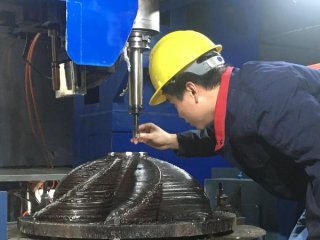The detailed 3D structure, reported in the July 31 issue of the journal Science, provides a roadmap for tweaking base editors to make them more versatile and controllable for use in patients.
The newly-revealed structure was obtained with a high-powered imaging technique called cryo-electron microscopy (cryoEM), according to the study.
"We were able to observe for the first time a base editor in action," said UC Berkeley postdoctoral fellow Gavin Knott. "Now we can understand not only when it works and when it doesn't, but also design the next generation of base editors to make them even better and more clinically appropriate."
The base editor is a type of Cas9 fusion protein that employs a partially deactivated Cas9 -- its snipping shears are disabled so that it cuts only one strand of DNA -- and an enzyme that, for example, activates or silences a gene, or modifies adjacent areas of DNA. Because the new study reports the first structure of a Cas9 fusion protein, it could help guide the invention of myriad other Cas9-based gene-editing tools.
"We actually see for the first time that base editors behave as two independent modules: You have the Cas9 module that gives you specificity, and then you have a catalytic module that provides you with the activity," said Audrone Lapinaite, a former UC Berkeley postdoctoral fellow who is now an assistant professor at Arizona State University in Tempe.
Lapinaite and Knott are co-first authors of the paper.
"This structure helps us understand base editors at a much deeper level," said senior author Jennifer Doudna, UC Berkeley professor of molecular and cell biology and of chemistry and Howard Hughes Medical Institute investigator. "Now that we can see what we're working with, we can develop informed strategies to improve the system."
Base editors are now being used in attempts to correct single-nucleotide mutations in the human genome. Base editors now available could address about 60 percent of all known genetic diseases -- potentially more than 15,000 inherited disorders -- caused by a mutation in only one nucleotide, the study said.





















Latest comments